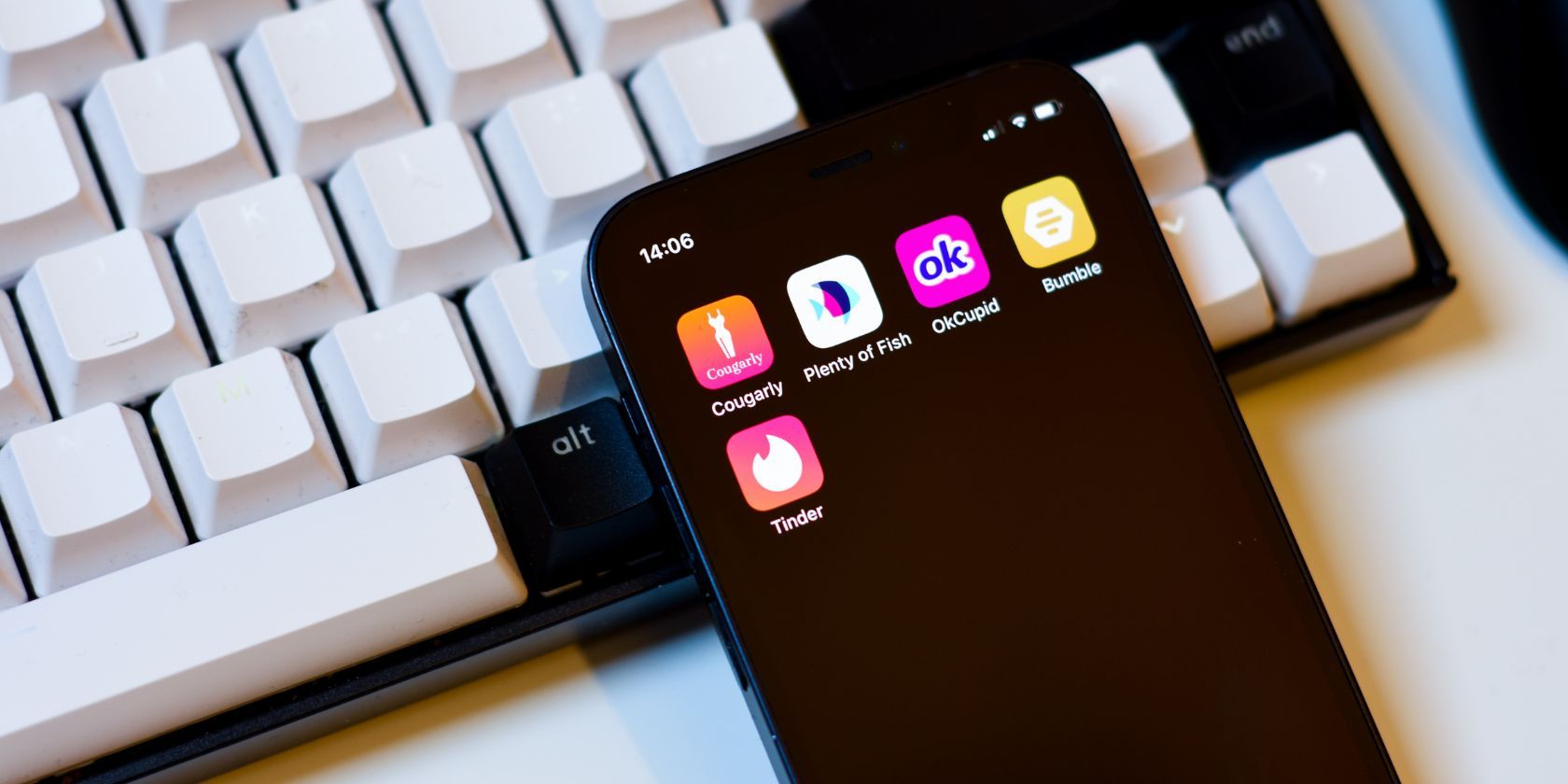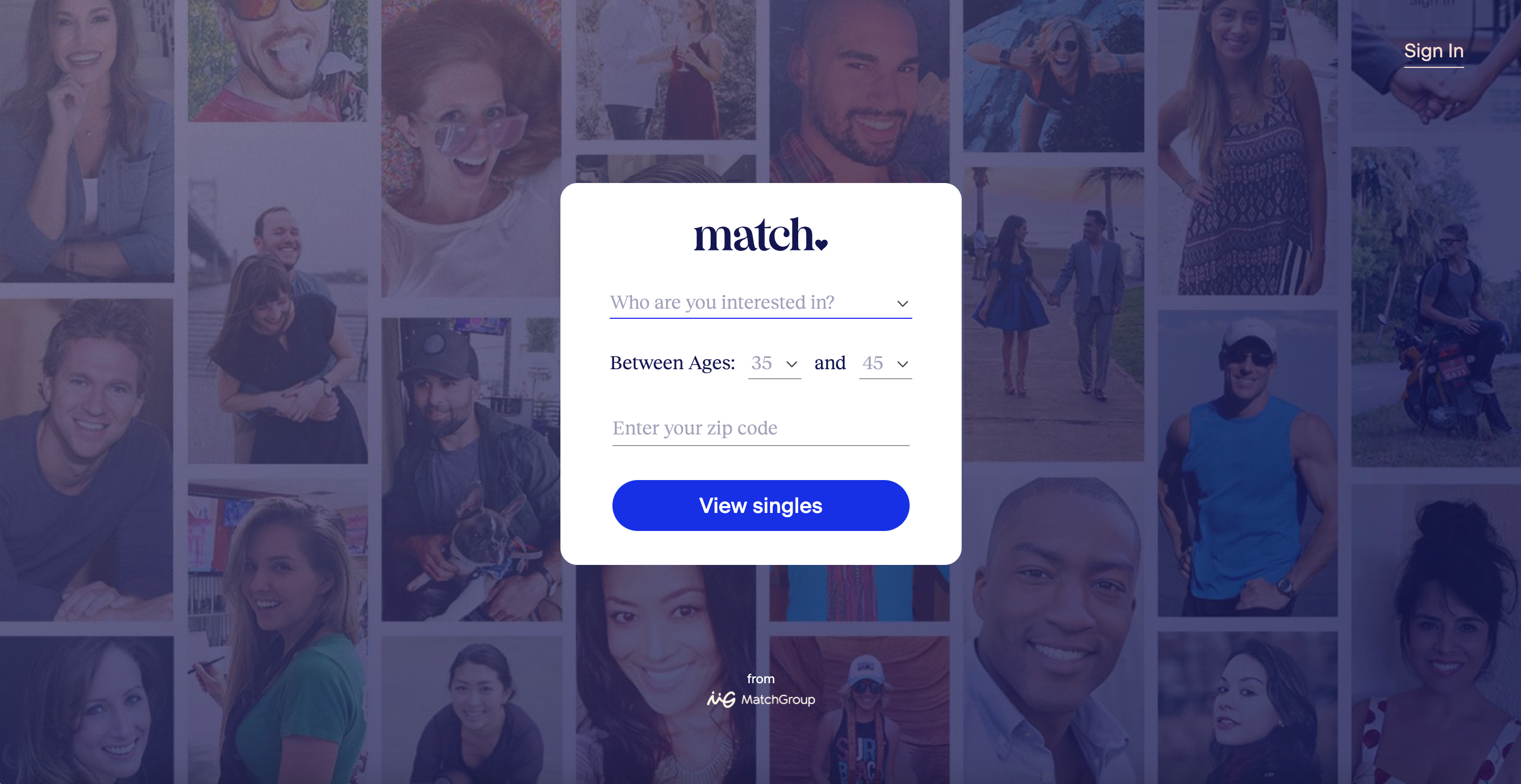Online dating has become a popular way to meet new people—for casual dating, marriage, or anything in between. Whether you realize it or not, your dating app choice will fall into one of two categories: swipe-based (e.g. Tinder or Bumble) or algorithm-based (e.g. Match or eHarmony).
These two types of apps operate differently and cater to different audiences. In this article, we’ll dive into the unique features of each, so you can feel empowered to sign up for the ideal type of dating app for your interests.
How Swipe-Based Dating Apps Work
Swipe-based dating apps allow users to quickly browse through profiles and connect with other users by swiping right if they’re interested and left if they’re not. These apps are designed to be easy and convenient, allowing users to quickly scan through profiles and connect with people who catch their eye.
Refer to our articles on how Bumble works and how Hinge works for some great examples of swiping in action.
On a swipe-based dating app, users are typically shown a series of profiles with photos and a brief bio. They can then swipe left or right on these profiles to indicate their interest or lack thereof. If two users both swipe right on each other’s profiles, it’s a match, and they can start messaging each other.
Swipe-based dating apps are popular because they’re easy to use and offer a fast way to meet people. They can be particularly useful for if you’re looking to meet new people in your immediate area. Additionally, these apps can be fun and addictive, encouraging users to keep swiping to see who they’ll match with next.
However, swipe-based dating apps also have their drawbacks. They tend to emphasize appearance versus compatibility. Additionally, sifting through profiles can be time-consuming, and these apps may not be as effective for those looking for long-term relationships.
Overall, swipe-based dating apps offer a convenient and easy-to-use platform for connecting with new people, but they may not be the best choice for those seeking more serious relationships. Follow the golden rules of dating apps, and you’ll be positioned for success.
How Algorithm-Based Dating Apps Work
Algorithm-based dating apps, such as eHarmony and OkCupid, use a series of questions and algorithms to match users with compatible people. These apps take a more scientific approach to matchmaking, using algorithms to identify compatibility and help users find partners more likely to be a good match for them.
We walk you through how OkCupid works in another article, but the process is generally similar among algorithm-based apps.
With an algorithm-based dating app, users typically start by filling out a detailed questionnaire about their interests, preferences, and personality. The app will then use this information to suggest potential matches for the user.
Some algorithm-based dating apps may also ask users to answer additional questions or participate in quizzes to refine their match recommendations.
Algorithm-based dating apps are popular because they tend to focus more on compatibility than appearance, making them a good choice for those seeking long-term relationships.
They can also save users time by suggesting matches who are more likely to be compatible, rather than requiring users to sift through numerous profiles themselves. These apps may also offer more detailed profiles and information about potential matches, helping users to assess their compatibility better.
However, algorithm-based dating apps also have their drawbacks. They can require more time and effort to set up a profile and answer questions, and may not be as user-friendly or convenient as swipe-based apps. Additionally, they may not have as many users or as wide a reach as swipe-based apps, and they may be more expensive to use.
Overall, algorithm-based dating apps offer a more scientific approach to matchmaking and are generally considered the best choice for those seeking long-term relationships. However, they may require more time and effort to set up and use and may not be as widely available as swipe-based apps.
Remember: swipe-based dating apps emphasize convenience, so your location could work against you in an algorithm-based dating app setup.
The Role of AI and Machine Learning
In recent years, online dating apps have begun incorporating artificial intelligence (AI) and machine learning algorithms to improve the user experience and increase the success rate of matches. These algorithms can analyze user data, such as location, interests, and past interactions, to suggest potential matches.
AI and machine learning algorithms can also be used to improve the user experience by suggesting conversation starters or eliminating inappropriate messages. Some dating apps even use AI to verify the authenticity of user profiles, helping to reduce the prevalence of fake profiles and catfishing.
While AI and machine learning algorithms can certainly improve the efficiency and effectiveness of online dating apps, they also raise privacy concerns. Protect yourself from the most glaring dating app privacy disasters. It’s important for users to carefully review the privacy policies of dating apps and understand how their data is being used.
Feedback From App Users
Swipe-based apps get a bad rap for being superficial; they are commonly known as “hookup apps” and notorious for short-term flings. But a quick Google search will serve up evidence to the contrary.
Insider showcased long-term love stories that started on Tinder. Bumble users Luke and Amanda’s love story started with a swipe and ended with him moving across the country to be with her. And I personally stood by a bride who married her Hinge match and is now enjoying their happily ever after with a beautiful baby girl.
While swipe-based apps are commonly associated with hookups, algorithm-based apps are assumed to be marriage-focused. But that doesn’t mean you won’t find commitment-phobes on Match or Coffee Meets Bagel.
Buzzfeed highlighted some outrageous dating app horror stories, and Match.com nightmares were sandwiched in with those of Bumble, Tinder, and other swipe experiences. Unfortunately, the type of app doesn’t dictate the type of app user. However, DatingAdvice claims, “Even if Tinder users are cagey about commitment, they’re not afraid to call out toxic dating behaviors.”
Swipe-based and algorithm-based dating apps have one key element in common: humans. The manual entry of information, whether it be a handful of photo uploads or answers to profile questions, puts all dating app users at risk of getting an app experience they weren’t expecting.
Feedback From App Creators
The online dating space is a highly saturated but ultimately lucrative market—with Statista predicting total users to exceed 440 million and total revenue to reach $3 billion in 2023. The originators of every site or app built their platform with differentiation in mind.
Many swipe-based apps are designed to reduce the time it takes to find a match, whereas traditional algorithm-based apps devalue the need for speed and prioritize quality connections over quick hits.
Take, for example, Tinder, which essentially invented the swipe system. Tinder’s founders’ have openly discussed the ideas behind the swipe system. In a Protocol interview, they equated the swiping UI to sifting through a physical deck of cards—sharing that the growing stack of “no” cards leads to an obvious supply issue.
“When we talk to our members, we hear a lot of frustration around [there being] a lot of swiping, a lot of messaging back and forth — that’s happening in the dating world more broadly,” Match’s chief product officer told TechCrunch.
“When we think about folks on our product, who don’t have a ton of time, that’s where ‘Matched by Us’ came from. Our singles don’t want to swipe through hundreds of profiles,” he said.
Overall, it’s clear that both swipe-based and algorithm-based dating apps approach matchmaking differently. But the rise in artificial intelligence is closing the gap between swipe-based and algorithm-based models.
Either App Can End in Love or Heartbreak
Ultimately, both swipe-based and algorithm-based dating apps have their pros and cons. Swipe-based apps can be convenient and fast, but they may be less effective for those looking for a long-term commitment.
The bottom line: Swipe and algorithm dating app experiences offer equal opportunities for heartbreak or happily ever after. You can find exactly what you’re looking for, whether it be marriage, casual dating, or something in between, with either app type. But just as with in-person, organic dating, you have to be willing to go through a few frogs.



